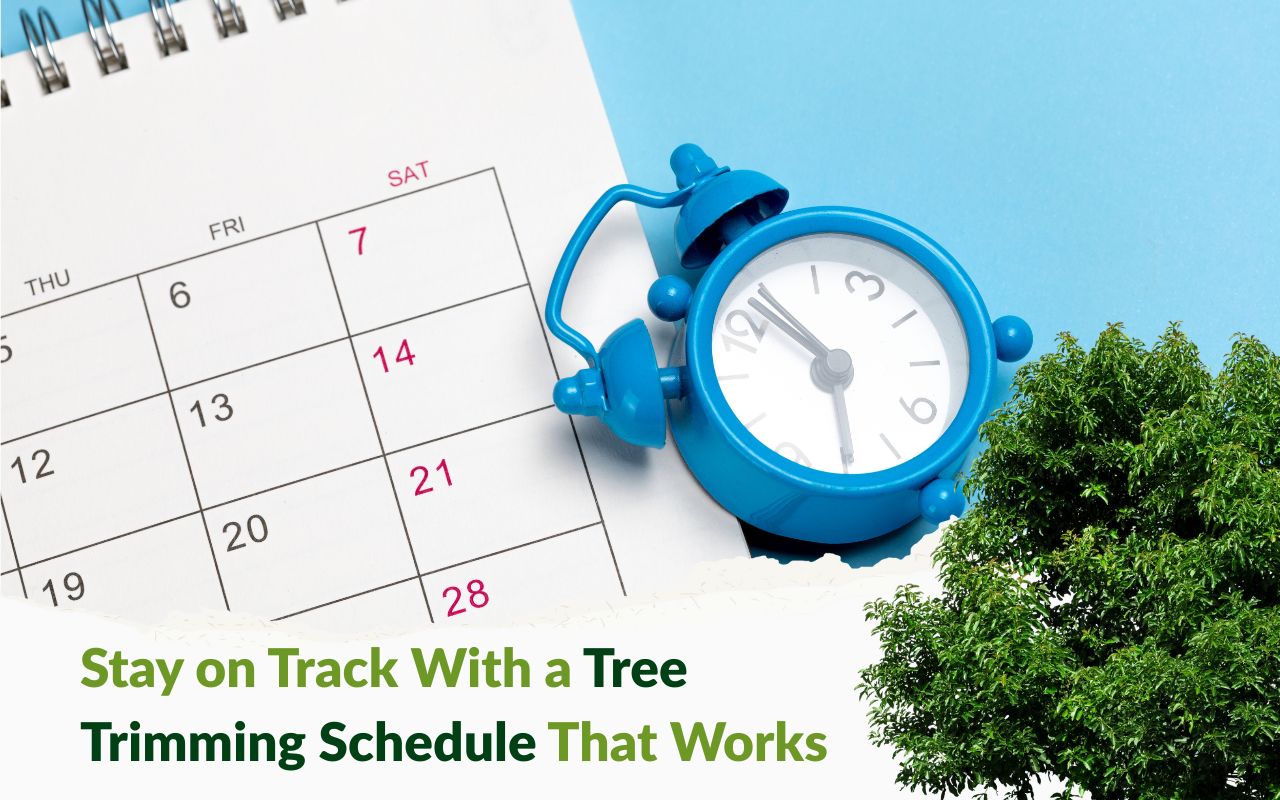
If you’re not following a tree trimming schedule, your yard could be missing out on some key benefits. Regular pruning doesn’t just improve looks—it protects your trees and helps them grow stronger over time.
At Perez Landscape and Trees LLC, we work with Kansas City homeowners to maintain healthy landscapes through smart seasonal care. If you’re wondering how often trees should be trimmed, or when to start, this guide will walk you through it.
Why Trees Need a Consistent Trimming Routine
Keeps Growth in Check
Without regular maintenance, trees can grow unevenly or develop weak limbs. Trimming at the right time encourages balanced growth and stronger structure. This also reduces the chance of damage during storms or strong winds.
If you’ve had limbs break or trees lean too close to your home, trimming can make a big difference in safety and long-term stability.
Protects Tree Health
Trimming helps remove dead, diseased, or infested branches before they spread problems. Opening up the canopy also allows better airflow and sunlight, which supports the overall health of your tree.
By keeping a schedule, you reduce the risk of pests, fungi, and poor development—especially in crowded areas of your yard.
How to Build a Tree Trimming Schedule That Fits Your Yard
Timing Based on Tree Growth and Location
Not every tree grows at the same pace, which is why a custom trimming plan works better than a generic calendar. Some trees—like fruit-bearing species or fast growers—need more attention. Others can go a few years without a major trim.
If you’re setting your first schedule, start here:
- Newly planted trees should be checked every couple of years to shape structure
- Established shade trees often go 3 to 5 years between trims
- Flowering or fruit trees usually benefit from yearly pruning to support blooming and harvest
This rhythm keeps trees manageable and encourages strong branch formation. A tree care assessment can help you decide if it’s time for an adjustment.
Situations That Call for Extra Attention
Some trees won’t wait until your next scheduled visit. You’ll need to step in early if:
- Branches hang low near your driveway or roofline
- Storms leave broken or split limbs
- Signs of pest damage, fungus, or dieback appear
Addressing these issues early helps preserve tree health and avoids long-term damage.
Choosing the Best Season for Tree Trimming
Trim During Dormant Seasons When Possible
Late winter and early spring are ideal for most trees. During this time, trees are dormant, which reduces stress and makes cuts easier to heal. It’s also easier to see the branch structure when leaves are gone.
Avoid heavy pruning in fall, when cuts may heal slower and risk exposure to disease. Light touch-ups in summer are okay, especially after storms or fast growth.
FAQs About Tree Trimming Schedules
Can I trim my trees once and be done?
No. Trees grow continuously, and ignoring them for too long can lead to overgrowth, broken limbs, or poor health.
How do I know if my tree needs trimming more often?
Watch for signs like low-hanging branches, crowded canopies, or visible damage. If you’re unsure, schedule a consultation with a certified tree expert.
Is it better to trim before or after blooming?
For flowering trees, trimming just after blooms fade encourages growth for the next season without cutting off potential flowers.
Let Us Help You Build the Right Tree Trimming Plan
Your trees deserve the right care at the right time. With a tree trimming schedule tailored to your yard, you’ll enjoy better safety, stronger growth, and a more beautiful outdoor space.
At Perez Landscape and Trees LLC, we provide expert tree trimming and removal services throughout Kansas City and surrounding areas. Our team helps homeowners plan trimming that fits both their trees and their timeline.
Contact us today for a free estimate and customized schedule.
